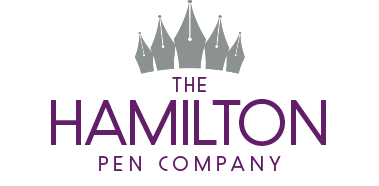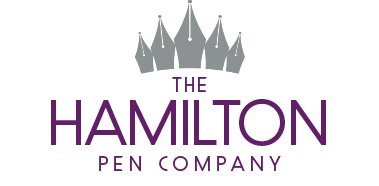All filling systems perform the same action in one way or another - their purpose is to draw ink up for use. Working hand in hand with the nib, the filling system is the artery of the pen with the nib being the heart. There are many personal views on filling mechanism types, some purists reject the modern cartridge converter, others dismiss the complexity of mechanical piston fillers, and some spurn mechanisms altogether opting for an eyedropper filler. In the argument ‘are all filler systems equal’ the simple answer is yes, in that they ultimately serve the same purpose but there are advantages and disadvantages to each fountain pen filling mechanism.
We are going to take a look at the four most common fountain pen filling mechanism types, considering the pro’s and con’s of each type, so if you are new to fountain pens or are wanting to branch out to some new types, this article is for you.
Cartridge Fountain Pens
Probably one of the most commonly known filling mechanisms, the cartridge fountain pen is something of a modern filling system with an early example being the 1954 Waterman CF released by JiF-Waterman, the french subsidiary of the well-known manufacturer. The 1960’s saw the cartridge fountain pen really take off and shaeffer produced them by the millions.
Most modern fountain pens will accept ink cartridges, some will also make use of an ink converter as well. Since their advent, there has been very little in the way of changes to the original cartridge design. Common types include; the International Standard which fits most European fountain pens, International Standard Long, and proprietary cartridges such as Parker, Shaeffer, Cross, Waterman, Platignum - the list goes on.

Parker IM Fountain Pen - Matte Blue - cartridge and converter options available
Ink cartridges are essentially small tubes filled with fountain pen ink, often they are disposable plastic or in some instances are housed in stainless steel cases. These are placed into the pen and generally the motion of placing the cartridge into the fountain pen pushes a small ball down into the ink tube to allow the ink to flow. In some cases, a plastic seal is punctured by a pin to release the ink, this is the case for Parker and Lamy cartridges.
Advantages of Cartridges
- There is a delightful simplicity to cartridge pens...they come pre-loaded with ink so there's no messiness, just pop them in and go.
- Cartridges have an element of convenience due to their portable nature making them an excellent choice for those in need of ink on the go.
- From a cost perspective, cartridges are probably the least expensive filler system covered in this article.
Disadvantages of Cartridges
- A downside of cartridges is that many brands use proprietary cartridges which are incompatible across other brands which may limit choices.
- Bottled ink is so wide ranging these days that the use of cartridges could be seen as limiting the multifarious options that bottled ink offers. Having said this, it is relatively common practice to reuse emptied cartridges by filling them with the ink of choice using a syringe although the results of this and the impact on the pen itself is very much down to factors including user experience and pen brand so caution should be taken.
- The disposable nature of cartridges is not as environmentally friendly as some other filler systems. More and more companies are using plastics which can be recycled (Lamy and Kaweco for example) but a great many brands either do not note a recycling code or the plastic used is not recyclable. Although with a steady hand, cartridges can be refilled at home but this can not be a perpetual action as quality will begin to decline over time.
- Finally, cartridges have less capacity for ink than other methods.

Converter Fountain Pens
Although not technically a different ‘type’, but rather more of a category, Converter Fountain pens are an interesting hybrid of the cartridge pen. Many cartridge pens can be fitted with a converter which replaces the area which would house the cartridge with a receptacle to act as the filling mechanism. This allows for ink to be drawn from a bottle thus ‘converting’ the cartridge pen into a bottle-filling pen.
Rather than using an ink cartridge, the converter is inserted into the pen and then draw the ink up through the nib and feed from an ink bottle. A converter uses mechanical force to create a low air pressure chamber into which ink is drawn. Unlike a cartridge system, you are not limited to ink choices in the same way with a converter. However, converters tend to be proprietary so you do need the correct converter for your pen. When compared with pens which have built-in filling mechanisms, converters have a relatively small ink capacity which may require more refilling if you tend to write a lot.

Lamy Scala Fountain Pen - Titanium - uses Lamy ink cartridges or can be used with bottled ink with the Lamy Z27 converter
There are two types of converters: piston converters, which use a twist mechanism to draw ink, and squeeze converters, which use a simple press mechanism to draw ink. We will discuss pistons as a separate ‘filler type’ due to their permanence within the pen which differentiates them from other converter type filling mechanisms.
Advantages of Converters
- More reusable than cartridges, better for the environment
- Many cartridge pens are also compatible with converters
- Converters allow for the use of a wide variety of bottle inks
Disadvantages of Converters
- Converters are often proprietary designs and therefore are not all interchangeable. Ensure that compatibility between pen and converter is checked.
- Unlike some built in filling mechanisms, converters have a smaller capacity for ink and many only hold half as much ink as a larger cartridge.
Platignum Ink Converter
Piston Filler Fountain Pens
As mentioned in the above section, Piston Filler systems are essentially converters but instead of being removable, the piston is a permanent feature of the pen. Unlike with some converter systems this does mean that Piston fillers can’t utilise cartridges as well as bottled ink.
In 1907, the Lever filler was patented by Shaeffer and used a hinged lever set in to the barrel of the pen which compressed a sac creating the vacuum required to force ink into the pen. As can be expected, this innovative design was copied by many manufacturers with slight variation. The crescent filler, patented by Conklin is an early take on the button or lever-filling fountain pen, and consists of a crescent-shaped piece of metal which is depressed to engage the ink sac and fill the pen upon release.

Conklin Crescent Filler Fountain Pen - Red Chased
Parker created the button filler which was more concealed than the leaver as it was hidden behind a cap on the barrel. Other variations went into production, gradually increasing in complexity. In 1952, Sheaffer introduced the ‘snorkel’ system which filled the ink sac via a retractable tube which meant that the pen didn't need to be dunked in ink and so didn't need to be wiped down afterwards, amounting to a cleaner filling process in theory.
Piston fillers which performed with a screw mechanism are notable from as early as the 1820’s, but the modern version of the piston filler is most akin to the Pelikan of 1929 which required that the user turn a knob at the end of the pen to enact the screw mechanism, drawing ink up the barrel.
The piston filler was considered easier to use than the predecessors from which it drew inspiration. The popularity of the piston filler and the ease of use is testament to its continued popularity in modern pens, although historically pistons were far more popular in Europe than the United States whereas they experience global popularity in the 21st Century.

TWSBI ECO-T Coral - Piston filler type fountain pen
Regardless of whether the mechanism is operated via twist knob, slider, level or some sort of push or pull action, piston fillers work essentially a vacuum is created and ink is drawn to the pen ready for writing.
Advantages of Piston Fillers
- There is much larger selection of inks available to users of piston filler
- Due to their design, piston filler pens can hold much higher capacities of ink meaning they do not need refilling as often.
- Piston filler mechanisms are easy to use and because they are inbuilt you do not need to worry about misplacing parts
Disadvantages of Piston Fillers
- The main disadvantage of piston fillers would be that they can be considered more difficult to travel with due to the requirement for having bottled ink with you. However, this is something of a stretch because many manufacturers of ink have created travel sized options and there are many vials on the market to decant ink into.
- It may be argued that piston filler pens are more difficult to self-maintain for novices due to more complex inner workings.
Eyedropper Fountain Pens
Some of the earliest fountain pens were reservoir based eyedropper filled pens. Less than common than they once were, eyedroppers remain popular among collectors and pen enthusiasts alike. The filling mechanism of an eyedropper was considered cumbersome and potentially messy and so bore the foundations of the commercial development of alternative methods as noted above.
Luckily for many of us, the more convenient newer filling mechanisms never entirely replaced eyedropper filler pens and they remain widely manufactured. The simplicity of the process and the fact that eye droppers have the capacity to hold a large volume of ink compensates for any inconvenience of filling.

Kaweco Eyedropper 1910
Calling the eyedropper filler a ‘mechanism’ is something of a misnomer as it is not in fact a mechanism at all. Simply unscrew the pen section, take the eyedropper and fill the barrel with ink then screw everything back together and begin writing. The simplicity of the process is undermined slightly with the fact that the process of screwing and unscrewing the pen can lead to the seal wearing over time leaving the pen prone to leakages.
To combat this, there are some contemporary eyedropper filler fountain pens which seal the entire barrel which then serves as an ink reservoir allowing for a great ink capacity. Some cartridge pens are converted to eyedroppers to make use of that large capacity for ink.
Advantages of Eyedropper Pens
- Without additional components taking up precious real estate, eyedropper pens have a large ink capacity.
- The choice of inks is very varied when using an eyedropper pen as there are few limitations to ink types which can be used. In principle, unless other factors are in play, eyedroppers should be able to utilise any ink without issue although some older formulations of sheen inks can cause blockages.
Disadvantages of Eyedropper Pens
- Although, as previously mentioned, some cartridge pens can be converted to an eyedropper not all of them are suitable. The pen barrel must be airtight to prevent leakage and there must not be any metal exposed within the barrel or it will tarnish.
- Although with due care and attention there should not be major issues, eyedropper pens are prone to leakage because the entire barrel is filled with ink rather than housing components which contain the ink.
- Although the process of filling an eyedropper is incredibly simple, eyedropper filler fountain pens require a variety of materials to ensure proper filling and maintenance which means this pen type is less convenient and portable than other fountain pen types. Eyedropper fountain pens require the user to carry bottled ink, silicone grease and the eyedropper itself with them for refills.
Filled In?
We have briefly covered the main fountain pen filler mechanisms which are commonly found today. It can seem intimidating to start using a fountain pen and many ink filling systems seem relatively daunting but once the basics are understood it is really simple and rewarding. We have covered only a portion of filler mechanism types, there are always new innovations in fountain pens sure to surprise and delight.
Most manufacturers offer converter and cartridge options with fountain pens so the commitment levels are up to the pen owner. The charm that comes with writing with a fountain pen is further extended with the hands on process of filling, cleaning and maintaining the pen and is one of the many reasons why we love fountain pens.
To experience the joys of fountain pens and to explore the vast array of filling systems available, visit The Hamilton Pen Company ...don't forget the ink!





